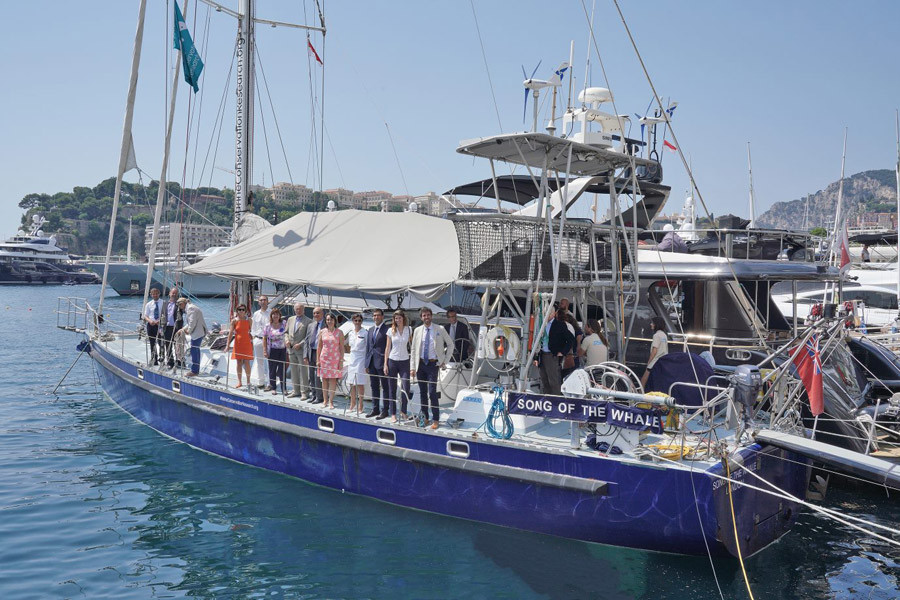This week I would like to talk about the ‘alternatives’ which are weight-loss medication and surgery, which I recommend neither unless you’re morbidly obese and we’re talking life-saving rather than aesthetics. If changing lifestyle has failed to help you achieve the results you were hoping for, weight loss medication can be another option to be considered. However, it is important to consult a doctor who specialises in obesity medicine and who can help select the appropriate medication based on your own medical history. Only a professional can help you responsibly to manage the risks and benefits of different drugs.
Weight loss medications are typically prescribed for those with a body mass index (BMI) of 30 or higher, or a BMI of 27 or higher with health conditions such as high blood pressure or type 2 diabetes. A person who is 1.73-meter-tall and weighs 90kg has a BMI of 30.4; online tools can help you assist in calculating your BMI. Thought there are exceptions, this is normally the benchmark. Drugs are typically prescribed along with diet and physical activity changes.
Since there is a broad range of medications on the market, finding one that will works for different individuals is almost always not a huge challenge. Identifying the right match is key, as a drug may or may not be appropriate for someone depending on their personal health history. For example, if someone has uncontrolled hypertension, it’s unlikely they’ll be prescribed phentermine, a weight loss drug approved for short-term use.
Factors to consider: Weight loss drugs are not for everyone. Reasons doctors may not prescribe them include pregnancy and breastfeeding as well as any acute serious medical conditions, such as a recent heart attack, stroke or kidney failure. There are other factors doctors are looking for as well. Before starting medication, it’s best when weight has been stable for some time. Drugs are often introduced when a patient is ‘stuck’ at a stable weight and is not gaining or losing. Hitting a weight loss plateau, for example – something common among dieters who have lost some weight, when their metabolism drops to accommodate a smaller body size – might warrant the help of a drug in order to break through the plateau. A drug should be continued only if a weight loss of at least 5% of body weight is achieved after three months. If that’s not the case, or if there are any safety or tolerability issues – for example, if someone’s blood pressure goes up when taking the drug phentermine – it’s probably time to try a different drug. The process currently is about trial and error, in order to minimise side effects and maximise effectiveness in any given person.
Sometimes, a combination of medications will be necessary in order to achieve results. For example, where the obesity medicine specialist can really help the patient work through this to get the right medicine for them. Experts say you shouldn’t count on going off of a weight loss drug that has worked for you – that is, as long as you want to continue to maintain your weight loss. Taking a weight loss drug doesn’t guarantee results. Nobody is entirely sure yet why some people don’t respond to weight loss drugs.
EMA – approved weight loss drugs
The European market of pharmaceuticals for weight loss is developing dynamically. Currently, the choice of weight loss medication for overweight Europeans is not very diverse. However, doctors can select a medicine that will be effective in reducing weight for each individual patient. Historically, the pharmaceutical treatment of obesity in Europe, can be divided into four groups: Used earlier, and withdrawn from sale for safety reasons; Considered by the European Medicines Agency (EMA) as promising drugs to obesity, and never received a marketing authorisation; Currently in use; Approved by the EMA and awaiting their appearance on the pharmaceutical market.
Medicines that were previously used in Europe for the treatment of obesity and are no longer sold in pharmacies – are the sympathomimetics Rimonabant and Sibutramine. They are drugs of central action and at occasionally have enjoyed a limited degree of popularity in the treatment of obesity in overweight patients.
Compared to all the weight loss drugs, Rimonabant had the shortest term of a marketing license. The drug branded under the trademark Acomplia obtained a marketing authorisation in the European countries in 2006. Two years later, the production was stopped because of the increased frequency of reports of mental side effects.
Sibutramine, was approved in Europe in 1999, and was the most promising weight loss drug being considered a completely safe medicine. However, with every year of its use in the clinical practice of obesity treatment, increasing evidence has been gathered suggesting that the it raises the risk of cardiovascular disease. Consequently, the drug was withdrawn from sale in 2010.
Compared to Rimonabant and Sibutramine which were used for a while in Europe for weight loss, Lorcaserin and Qsiva failed to receive a marketing authorisation in the first place. In 2012, the EMA rejected a request to approve for sales of the combined weight loss drug Qsiva (Phentermine / Topiramate) in Europe. Clinical trials have shown that the use of Qsiva raises the risk of cardiovascular side effects. In 2013, another slimming drug – Lorcaserin – suffered the same fate as Qsiva did.
The EMA referred to an inadequate number of clinical trials that would confirm the efficacy and safety of Lorcaserin in weight reduction. The ban on Lorcaserin sales in Europe is still under discussion. If the safety of the drug in weight reduction is confirmed by clinical trials, the EMA is ready to consider a new proposal for marketing authorisation for Lorcaserin in Europe.
Phentermine appeared on the European pharmaceutical market in 1991 under the trademark Adipex Retard. This drug for fighting excess weight was used by the residents of Poland, Hungary, Austria and other countries. In 2006, however, many countries of the European Union imposed a ban on the sales of Adipex Retard because of the high risk of addiction. As far as I’m aware, the Czech Republic remains the only European country at present, in which phentermine-containing drug Adipex Retard is still sold. During the period of 1991 to 2017, the maximum allowable single dose of Phentermine was 30 mg. But recently, based on the decision of the Czech government, each Adipex Retard capsule can contain no more than 15 mg of the active substance.
While all these weight loss drugs have an obvious effect on the brain and the central nervous system, Orlistat acts exclusively in the gastrointestinal tract. The lack of systemic impact makes Orlistat a relatively safe and effective anti-obesity drug. Compared with other drugs for weight loss, which are sold in conventional pharmacies only on prescription, Orlistat can also be without a doctor’s prescription. The two forms Orlistat may be obtained are: Alli (over-the-counter); Xenical (prescription). Orlistat has been available for sale in almost all countries in Europe for a long time. People can also find medications for obesity, which appeared on the pharmaceutical market recently, but continue gaining popularity among obese patients every year.
During the period of time when Sibutramine was off the market (2010), Phentermine was for a while the only central-action drug in Europe for the treatment of obesity. However, in 2015, the European Medicines Agency (EMA) authorised sales of Mysimba in Europe. It is a combined drug, based on Naltrexone and Bupropion. Pharmaceutical company Orexigen obtained a marketing authorisation for the sale of Mysimba in Ireland on March 26, 2015, and on August 1, 2016 in Spain. In the near future, the appearance of the combined weight loss drug is planned in the UK as well as other countries of the European Union.
Around the same time Mysimba became available, the EMA granted a marketing authorisation in Europe for another weight loss drug – Saxenda (Liraglutide). Saxenda is a new weight loss medication that works as an appetite suppressant. As well as helping patients lose weight, the medication appears to improve many indicators of cardiovascular risk. However, Saxenda has not yet been launched for sale in the European Union. This drug is expected to appear on sale in the near future. Currently, Europeans can buy Saxenda online.
If appetite (or hunger) suppression is what you’re after, another popular product which is licensed in the European Union is PGX , which is produced by Natural Factors and is available for purchase and home delivery in Monaco. The main benefit of PGX Daily is appetite suppression. Like many other diet pills out there, this brand claims that it can increase your satiety level, lowers of your glycaemic index of your meals and promotes healthy blood sugar levels. Natural Factors encourages you to incorporate PGX Daily into your daily diet regimen and exercise routine for maximum weight loss. This will help you to achieve satiety and will normalize your appetite while increasing your metabolic rate. Natural Factors designed each capsule of PGX Daily in an ultra-matrix softgels, which provides an advanced delivery system for superior effects.
FDA-approved weight loss drugs: If you’re a jetsetter and have access to the USA market you will have several more options. For a weight loss drug to be approved for long-term use in the USA, it must have two years of data showing that it is safe and it works. Generally speaking, in the USA, a drug can be considered effective for weight management if, after one year of treatment, at least 35% of those in the drug group (and about double the proportion of people of the placebo group) lose at least 5% of their weight. Weight loss drugs approved for long-term use include orlistat (brand name Xenical), lorcaserin (Belviq) and liraglutide (Saxenda) as well as the combination drugs naltrexone-bupropion (Contrave) and phentermine-topiramate (Qsymia). Some drugs are prescribed “off-label,” which means, for a use other than what it was approved for. For example, metformin is a drug that is FDA-approved for diabetes, but there is evidence that it can produce weight loss even in people without diabetes. If you have tried different weight loss medications and ruled out other possible reasons for lack of weight loss, including lifestyle habits and other prescriptions that cause weight gain, surgery might be the only option left for you.
Weight-loss Surgery
If you are severely overweight and have not been able to lose an adequate amount of weight with lifestyle changes or weight loss drug, or if you have serious health issues relating to obesity, bariatric (or weight loss) surgery is another viable option. Surgery should only be considered when other therapies for obesity failed. Once you’ve been through everything — and now you have diabetes, hypertension, sleep apnoea, arthritis. … That’s when you may start considering surgery.
Bariatric surgery procedures
Weight loss surgeries include gastric bypass, sleeve gastrectomy (also known as gastric sleeve) and a procedure called biliopancreatic diversion with duodenal switch. The latter is considered to have the best outcomes in terms of weight loss and remission of many medical conditions associated with obesity. However, it also carries the most risks. The adjustable gastric band is another option, though long-term risks associated with the band have led to a significant decrease in surgeons performing the procedure. The criteria for bariatric surgery include a body mass index (BMI) of 40 or higher (or more than 40 kg overweight) or a BMI of 35 or higher with health problems including type 2 diabetes, high blood pressure, heart disease or sleep apnoea. (A BMI of 30 or more with a serious health problem is indicated only for the gastric band).
The surgeries result in weight loss due to two reasons: They reduce the amount of food the patient can consume;They cause changes in hormones produced in the intestines that help reduce hunger, increase fullness and regulate blood sugar. For a detailed description of how the different weight loss surgeries work, check the American Society for Metabolic and Bariatric Surgery’s online guide. In essence, the reason most bariatric surgeries are so effective in producing long-term weight loss is that they strongly affect the physiological regulation of body weight, interfering with signals that defend against starvation and weight loss. This ultimately changes a person’s baseline, or the level at which weight tends to stabilise.
For example, the fundus, or upper part of the stomach, is the main location where ghrelin, a hormone that stimulates appetite, is produced. After the removal of the fundus in the gastric sleeve, the production of ghrelin is significantly reduced. In the gastric bypass and to a lesser extent the sleeve, there is an accelerated delivery of nutrients into the portion of the small intestine known as the hindgut, which causes an increase in secretion of hormones that inhibit appetite and encourage satiety.
Benefits and risks of Bariatric Surgery: An individual’s response to weight loss surgery varies, but on average, patients who had bariatric surgery tend to lose 15% to 35% of their starting weight. Gastric bypass tends to result in more weight loss than the band or gastric sleeve, though every bariatric procedure studied demonstrates similar wide variations in outcomes among patients. As a result of weight loss, bariatric surgery can improve many health conditions related to obesity, including type 2 diabetes, sleep apnoea, high blood pressure, high cholesterol levels, acid reflux and joint pain. In gastric bypass, improvement in diabetes occurs within days of surgery and is independent of weight loss. This is because of hormonal changes, which enhance insulin’s response to nutrients. The benefits of weight loss surgery do not arrive without risks and long-term considerations. Between 10% and 20% of patients fail to lose a significant amount of weight, and others experience significant or premature weight regain. Additional complications to consider include infection, bleeding, poor absorption of nutrients or dehydration early on, as well as ulcers and hernias. A side effect of gastric bypass known as “dumping syndrome” can occur shortly after eating and may result in nausea, dizziness, weakness, cold sweats, cramps and diarrhoea.
Long-term complications vary, as well. According to one 12-year study of people who had gastric band surgery, one in three experienced band erosion, and nearly half of patients needed to have their bands removed. It’s important to recognise that lifestyle changes after surgery are extremely important. That includes avoiding many types of foods. Surgery is unlikely to change the environment; therefore, combining lifestyle changes with surgery will produce the best outcomes. Those changes include eating more whole foods, avoiding refined and processed foods, and engaging in enhanced daily physical activity.
Additionally, lifelong supplementation of vitamins and minerals — including iron, calcium, folate, vitamins B12 and B1 and vitamin D – will be required because the risk of deficiencies due to diminished absorption increase after surgery.
The decision to have weight loss surgery is not an easy one. Every patient needs to be fully informed of the risks and the benefits and should be evaluated by a multidisciplinary team including a surgeon, a doctor (their GP and/or an obesity medicine specialist), a nutritionist and a mental health professional (or a dual discipline known as Functional Therapy). Furthermore, a full benefit-risk analysis should be performed. Do the benefits outweigh the risks? If so, surgery is the most effective therapy. Data show an increased life expectancy due to the remission and/or resolution of over 190 medical conditions associated with obesity, such as type 2 diabetes, heart disease, sleep apnoea, high blood pressure, kidney failure and more.
Udi Gon-Paz is a Functional Therapist specialising in Clinical Nutrition and Stress Therapy. Licensed to practice in Monaco and the UK and carrying full professional indemnity insurance.






